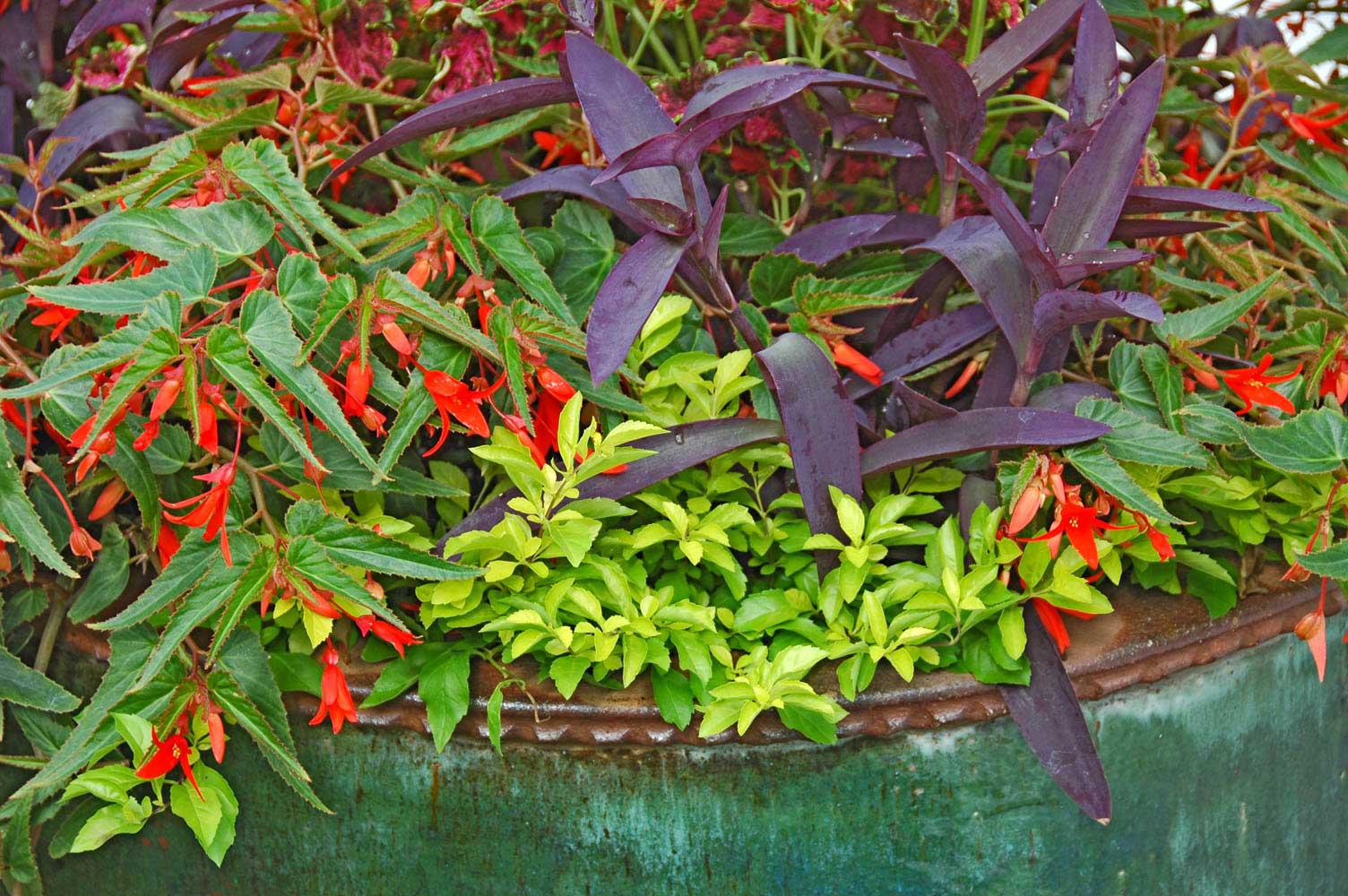Information Possibly Outdated
The information presented on this page was originally released on June 14, 2007. It may not be outdated, but please search our site for more current information. If you plan to quote or reference this information in a publication, please check with the Extension specialist or author before proceeding.
Gold Duranta lights up summer landscape
By Norman Winter
MSU Horticulturist
Central Mississippi Research & Extension Center
The lime, chartreuse and gold colors of the Gold Duranta are hard to beat in the landscape, and these plants continue to impress us at Mississippi State University's Truck Crops Experiment Station in Crystal Springs.
The Duranta is in the verbena family and is native to tropical America. For years, it has been a favorite as a green, shrub-like plant with delightful blue or violet flowers followed by gold berries loved by birds. The names “Golden Dewdrop,” “Pigeon Berry” and “Brazilian Sky Flower” have been associated with this plant. It even has been sold in hanging baskets.
The gold version from Jamaica is entirely different. It reaches about 12 inches tall by fall, spreading outward about the same distance. You'll grow the Duranta for colorful foliage that lights up the landscape like few other plants can do.
It's grown much like you would a lime-green or gold Joseph's Coat used at the front of the border as a ground cover or tucked in as filler in pocket plantings. It can be cut or sheared as needed, though this is not really necessary.
Of the named varieties in the trade, Cuban Gold is the most popular. Cuban Gold is an Athens Select variety courtesy of the University of Georgia that is being promoted by Proven Winners. There are numerous generic versions as well.
The fact that Duranta has been chosen as a Texas Super Star plant emphasizes its ability to take extreme summer conditions.
We planted ours in Crystal Springs thinking it would be an annual, so we have been delighted to find it returning. It has since been listed as a zone 8-11 plant. If you live in a colder area, you still will find it an outstanding value for your gardening purchase.
In our trial gardens, we planted ours in a Caribbean-style landscape close to large bananas, Purple Heart (Tradescantia pallida), variegated shell ginger (Alpinia zerumbet variegata) and Persian Shield (Strobilanthes dyeranus).
Last week, we filmed our Southern Gardening TV segment at a great landscape in Thomastown where the Gold Duranta was used prominently with Fresh Look Red celosia, an All-America Selections Gold Medal winner. In other parts of the landscape, it was used in mixed containers as a filler plant with Purple Heart and the hot new Bonfire begonia.
In my own front flowerbed, I have combined it with the purple-leafed Explosive Ember peppers and the Titan Blue Halo vinca. It really makes a nice partnership.
The Gold Duranta excels in well-drained, fertile beds with part to full sun. If you have tight, heavy, compacted clay, it will pay dividends to incorporate 3 to 4 inches of organic matter to loosen it up. Commercial landscapers plant on raised beds with prepared soil mixes. Feed Duranta with a light application of fertilizer monthly in the landscape and twice a month in containers.
Many gardeners are now pulling their pansies, snapdragons and other cool-season color and wondering what to plant in their place. I can say you will not be disappointed if you choose the Gold Duranta. You'll feel like you have gained the proverbial green thumb.









